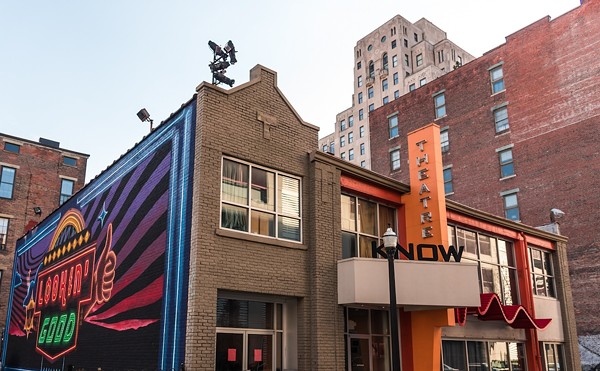
Systemic barriers often block the career paths of classical musicians of color, but the Cincinnati Symphony Orchestra wants to change that tune through a new partnership.
The CSO is partnering with NIMAN (National Instrumental Mentoring and Advancement Network), an initiative addressing the lack of racial equity in American orchestras. Jonathan Martin, president and CEO of Cincinnati Symphony Orchestra and a founding member of NIMAN, has big plans to develop a more inclusive classical music pipeline throughout the country.
But to get there, it’s important to recognize systemic hurdles that are especially difficult for non-white musicians.
Music instruction in public schools is a rarity, which creates ongoing obstacles, Martin says. In Cincinnati and beyond, many students and their families lack resources for instruments, lessons and transportation. Persistent racial biases also are reflected in staff appointments and the audition process, underscoring a perception that BlPOC (Black, Indigenous and People of Color) musicians lack the ability to perform or appreciate Western classical music.
“There’s no lack of talent. But if you look at the pathway confronting a student musician of color, you see this inexorable diminishment of diversity to the point where it’s almost non-existent,” Martin tells CityBeat. “You can’t just focus on the conservatory or the audition process. It’s a systemic issue of maintaining an open pipeline from early childhood on.”
But Cincinnati Symphony Orchestra and NIMAN are working to change that with a strategy to provide more opportunities to young musicians of color and offer them intentional, meaningful resources during their time both as students and as young professionals.
Martin says that plans to launch NIMAN began in 2019, when he met with Philadelphia-based musician Stanford Thomson, founder and executive director of Play On Philly, to lay the groundwork for a national network that would serve as a resource bank for BlPOC musicians, from preschool through professional training.
The following November, representatives from 30 organizations across the country convened in Cincinnati to flesh out NIMAN’s structure and governance.
In addition to Martin, participants from Cincinnati included CSO’s director of learning Carol Daly Dunevant, former CSO director of education and community outreach Ahmed Mayes, and Edgar Smith, founder and CEO of World Pac Paper and one of the first community business leaders to actively support NIMAN.
Martin’s commitment to equity was further reinforced in the aftermath of George Floyd’s murder in 2020.
“There’s a reason NIMAN is based in Cincinnati,” he says. “I want other orchestras to see Cincinnati as a place where things catalyze on the cutting edge, especially racial equity.”
Although NIMAN is a nationally focused initiative, Cincinnati provided major support in its formative stage with significant funding from ArtsWave and arts advocate Dianne Dunkelman.
Getting that national network of U.S. resources for BIPOC musicians off the ground tops NIMAN’s agenda, Martin says.
“There is so much great work going on already but there’s no organization currently collecting information on what’s available and what services are offered,” Martin explains.
Martin says he hopes to involve organizations ranging from Cincinnati Public Schools to performance groups and individuals as a way of building a robust resource network.
“NIMAN is a membership organization, and to encourage organizations to join in our first year, memberships will be on a pay-what-you-can basis for organizations and individuals,” Martin explains.
Martin adds that young BlPOC musicians or their parents can opt into the database to find local and national resources in a variety of disciplines and interests.
“It works both ways,” Martin says. “Organizations and individuals can promote themselves through this network and students and parents can access the resources.”
Carol Daly Dunevant will take over as the CSO’s liaison with NIMAN, while Martin will continue as an advisor on fundraising and personnel.
NIMAN is a separate 501(c)3 that will be housed in Music Hall with administrative support provided by the CSO. Martin and Thompson are overseeing the recruitment of national board members and staff recruitment will begin in the coming months.
Martin is upbeat about NIMAN’s potential to bring about systemic and tangible change to the culture of American orchestras. And he’s adamant about diversity and inclusion being key to the survival of symphony orchestras.
“If you have an all-white orchestra and you mandate inclusion and equity, how the hell do you do that if you’re not thinking about serving the broader community,” Martin asks. “For us, that’s the 52 neighborhoods that make up Cincinnati, along with Northern Kentucky and Southeastern Indiana.”
The CSO’s own initiatives include a comprehensive plan for diversity, equity and inclusion, the Diversity Fellowship program in partnership with the Andrew W. Mellon Foundation and the University of Cincinnati College-Conservatory of Music, and re-programming the 2020-21 season to feature more Black composers and performers.
“There’s a moral imperative and a great opportunity to reach new audiences by what we program, commissioning and performing new works by composers of color, and who plays the music,” Martin adds.
And there’s always room to grow, Martin says. Currently, the orchestra’s roster of 85 musicians includes cellist Norman Johns, who joined the orchestra in 1975 and was its sole Black musician until clarinetist Anthony McGill arrived in 2001. McGill left in 2004 to join the Metropolitan Opera Orchestra, leaving Johns the only Black musician in Cincinnati’s orchestra once again.
Additionally, nine CSO musicians identify as Asian, three as Hispanic or Latinx, and four as having more than one racial heritage.
Of the 171 members in the CSO’s Youth Symphony ensembles, ten identify as Black students, eleven as South Asian, six as Latinx and one as Middle Eastern.
Learn more about Cincinnati Symphony Orchestra, visit cincinnatisymphony.org. Learn more about NIMAN at niman.org.






